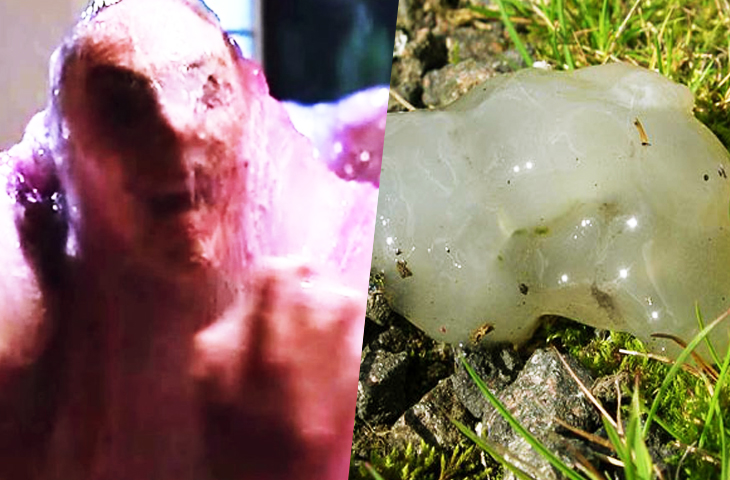
For those who can recall the 1958 horror movie of Steve McQueen, “The Blob,” about an alien entity with a large gelatinous body that crashed into earth on a meteorite, you may wonder what was the inspiration for the movie’s monster. Afterall, a gelatinous blob hardly seems like a standard scary monster. Well, believe it or not, an amazing sighting in Philadelphia in 1950 by two policemen that saw on a street, a large quivering mass of jelly 6 feet across and about a foot thick at the center. It gave off a mysterious dull purple glow. When they tried to pick it up, it dissolved into an odorless, sticky scum. While the movie starred McQueen in his first lead role, it was by no means a success and was considered a cheesy B-movie. However, it became a cult classic, and a remake in 1988 was done, making the “monster” more dangerous.
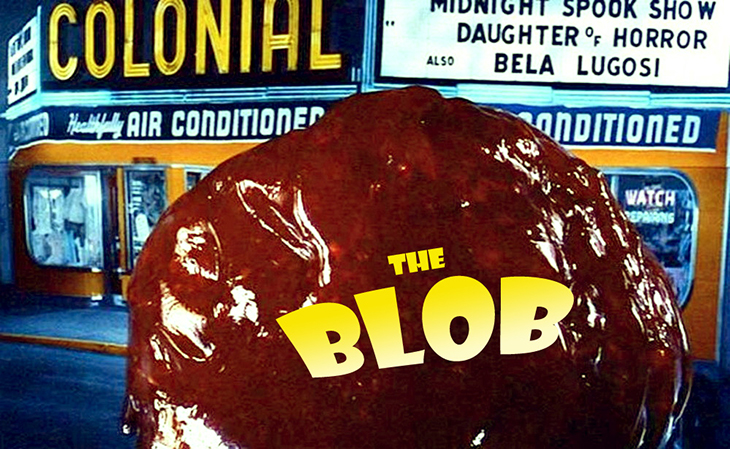
So what was the gelatinous blob the policemen found? For hundreds of years, there have been reports of gelatinous blobs on the ground supposedly that fell from the skies. Old writings from the 14th century describe a translucent, grayish-white slimy goo that evaporated shortly after having fallen. John Gaddesden, a 13th century English physician, mentions stella terrae (star of the earth) in his medical texts and suggested it may be used to treat abscesses. He described it as “a certain mucilaginous substance lying upon the earth.” The unknown gooey substance soon began to be associated with comets and shooting stars, as they often appeared during meteor showers. However, a 14th century Latin medical glossary has an entry that describes “a certain fatty substance emitted from the earth, that is commonly called ‘ a star which has fallen’” A “star (jelly)” is born…

While star jelly certainly didn’t fall from the stars, what it is exactly is hard to determine. Almost all samples examined have turned out to be some sort of biological growth. The most common explanation is that the jelly is unfertilized frog spawn that has been ripped out of the abdomen of predators such as birds. Or are gelatinous food disgorged by animals. Some of the sightings are amphibian innards collected from star jelly samples from Dartmoor in 1926. It was found that the samples had oviducts and ovaries with black eggs along with remnants of an alimentary tract and bladder of a frog or a toad.
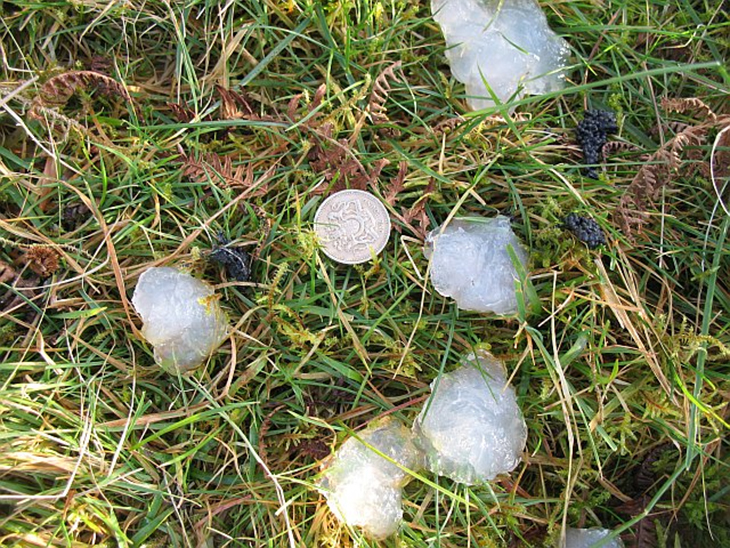
Star jelly discovered during autumn can be explained by this phenomenon. During this season, the female frog carries a batch of eggs ready to lay the following spring. As the eggs pass down to the oviduct, they are surrounded by a jelly secreted by the oviduct wall. The jelly is small in volume, but when they come into contact with water, they expand exponentially. If a predator captures the frog and tears apart the ovaries, it will release the jelly, which will absorb water from soil and rain and become large masses that people can see.
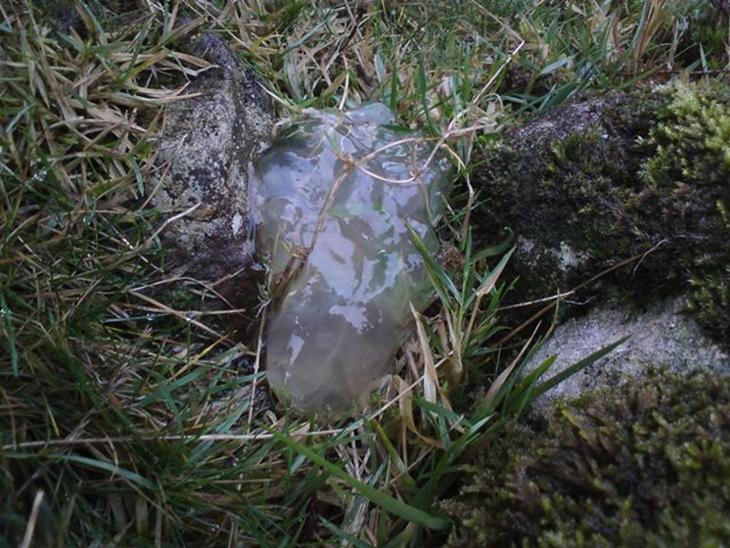
Yet many star jelly’s are probably slime molds. These are unusual organisms that can live freely as cells, but can aggregate together to form multicellular structures that can reproduce and even move around as a single body. They live off dead plant matter feeding on microorganisms. They can easily be mistaken for star jelly as they appear as gelatinous slime. Star jelly sightings are not rare. In 2008, within 4 months, there were over 130 sightings posted all over Britain, including 47 from Scotland. However, many sightings turn out to be something completely different. In 1979, a Texas resident reported several purple blobs of goo on her front yard following a meteoric shower. Investigators suspected the substance came from a nearby battery reprocessing plant, although there seems to be skepticism on the conclusion
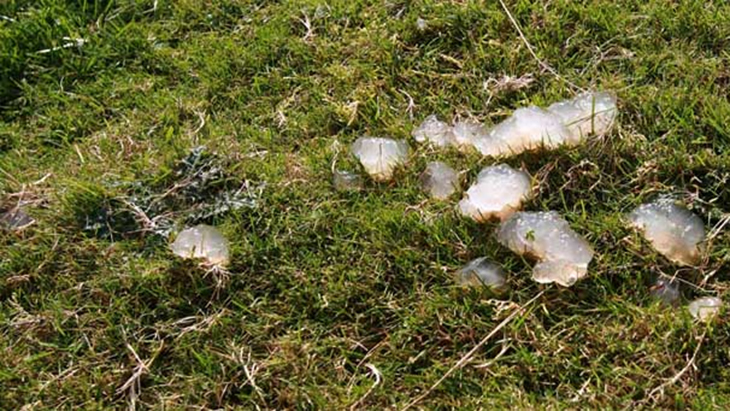
The continuing mystery has piqued man’s curiosity, and inspired other Hollywood films. The 1978 Invasion.of the Body Snatchers featured alien spores falling to earth in a rain shower and forming blobs of jelly that grow into flowers which produce the seed pods. It has also inspired poets and novelists as well. We love the mysterious it seems.
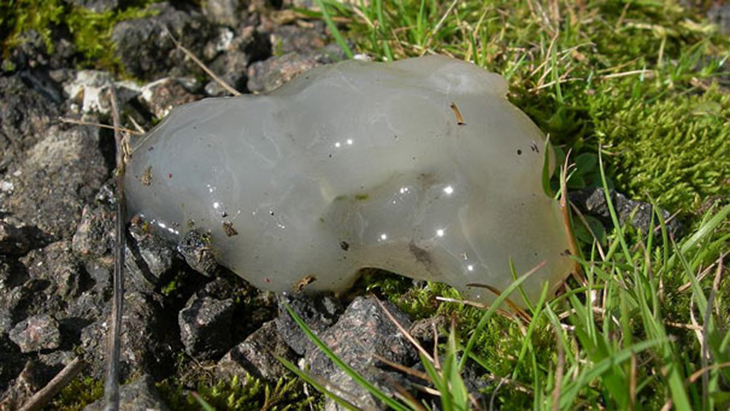
The most recent sighting of star jelly was in Goochland County, Virginia last June of 2019. A couple found 5 small piles of crushed-ice like substance, but gelatinous in nature. Upon investigation by an agricultural expert, the substance was not that of a living organism, but was man-made, a water based polymer used in gardening as a soil replacement. We wonder if the couple were relieved or disappointed. Hopefully star jelly remains to be not a dangerous alien organism that devours and dissolves living creatures like in the movie.



